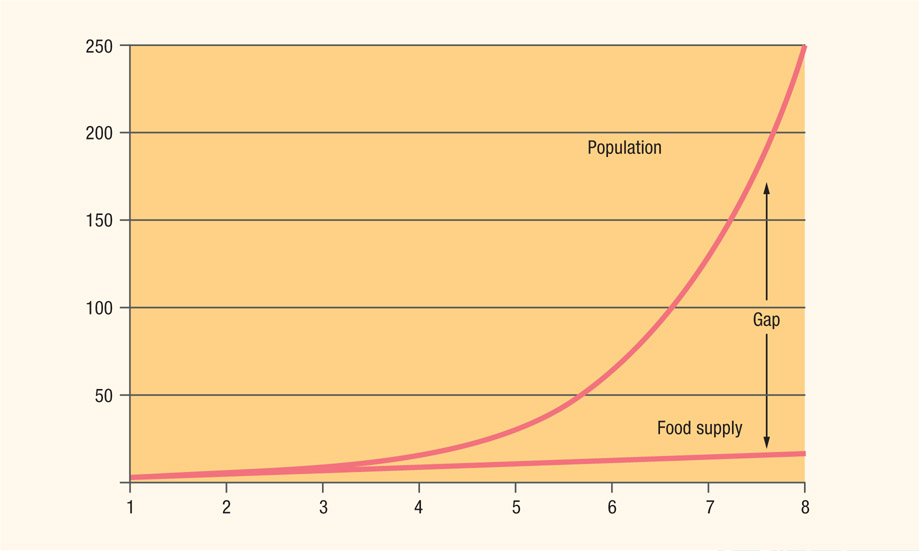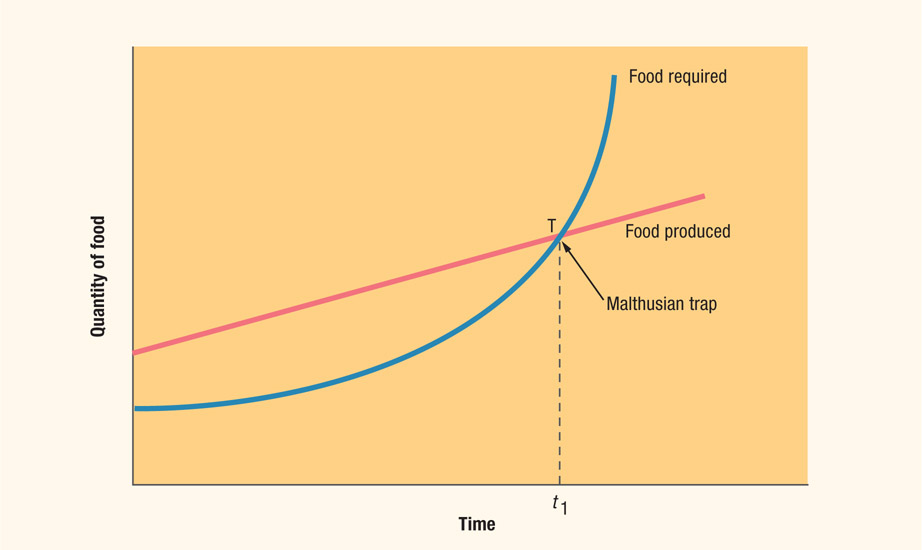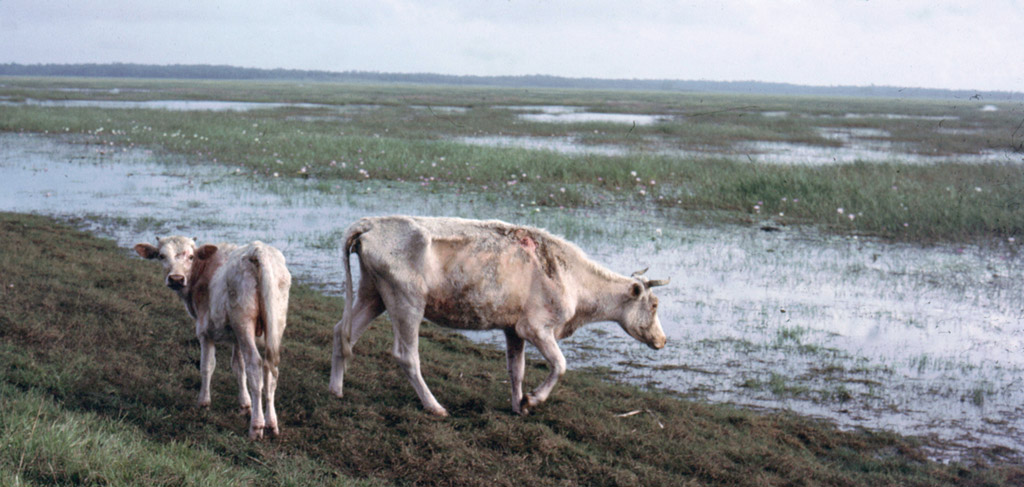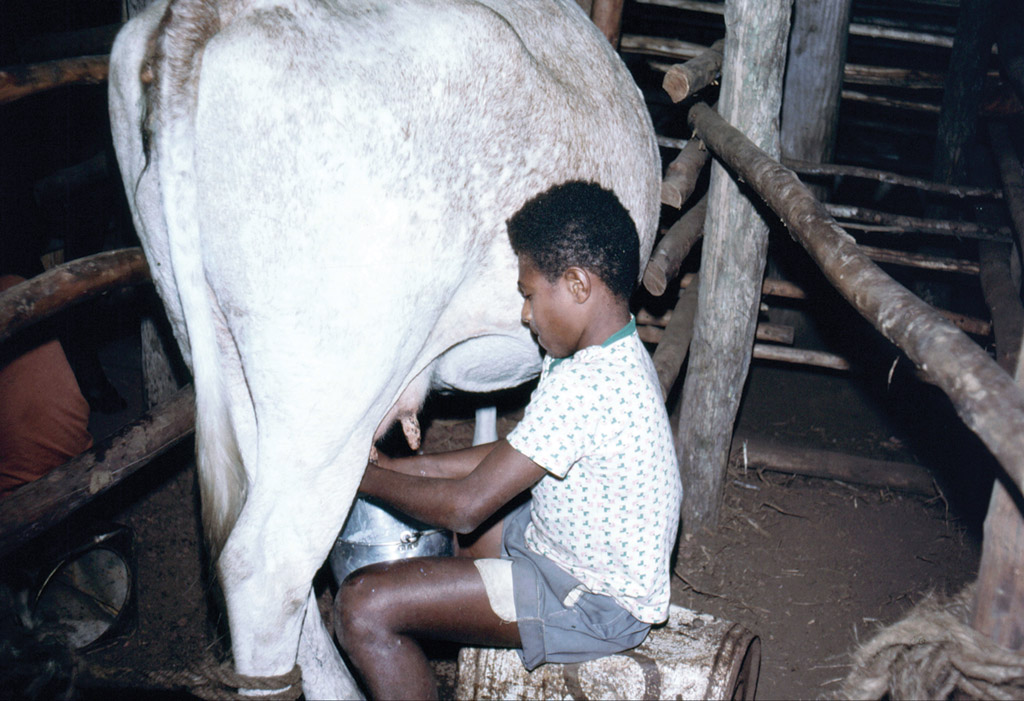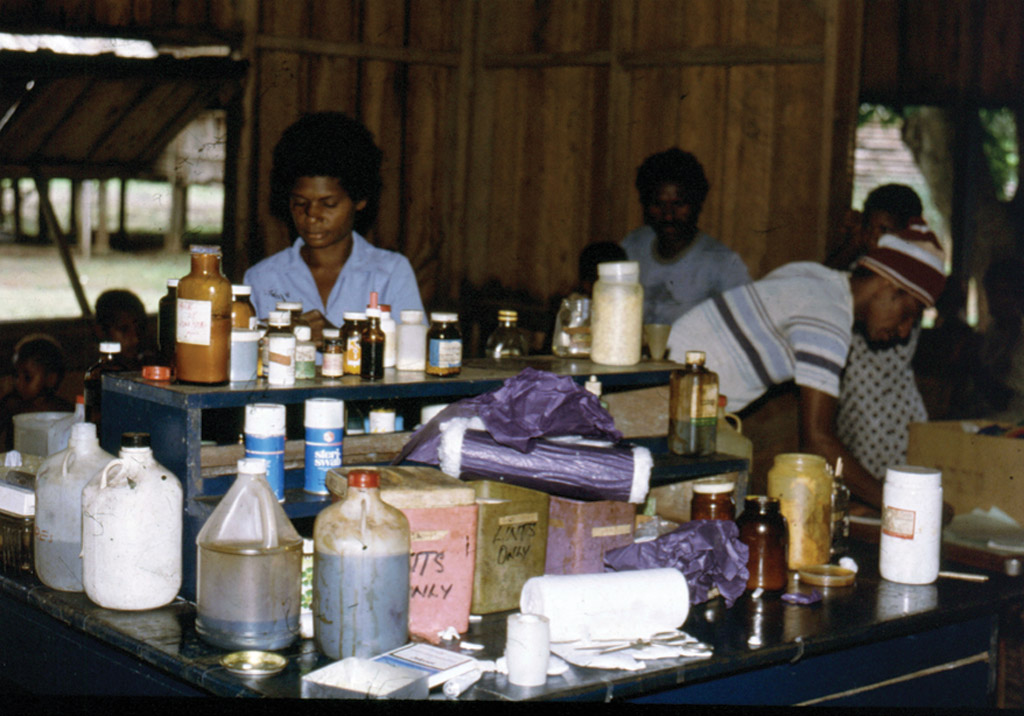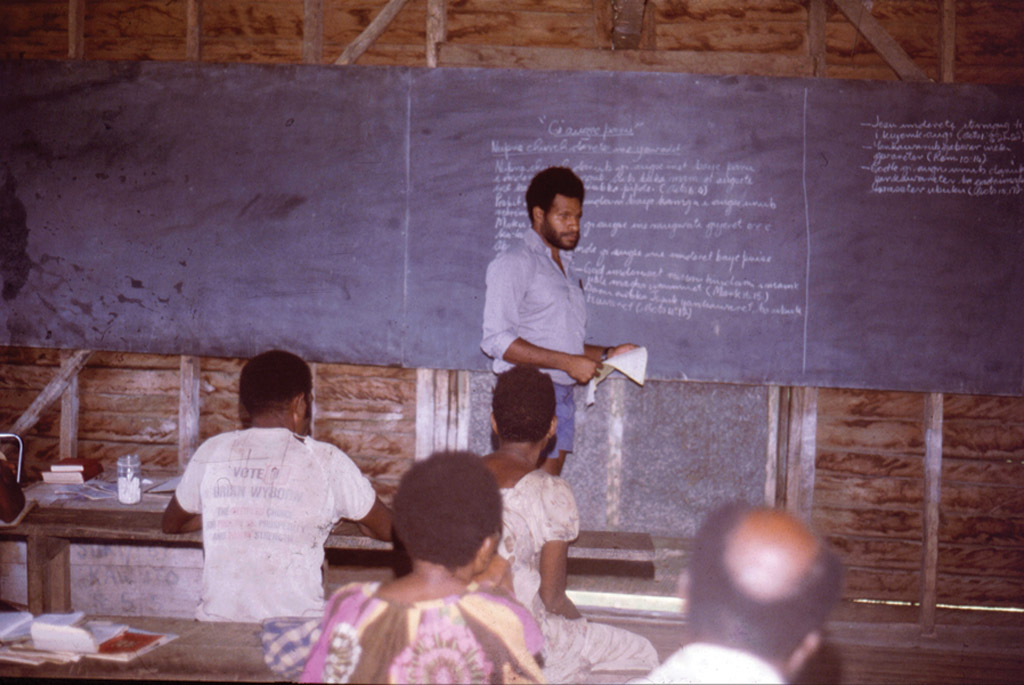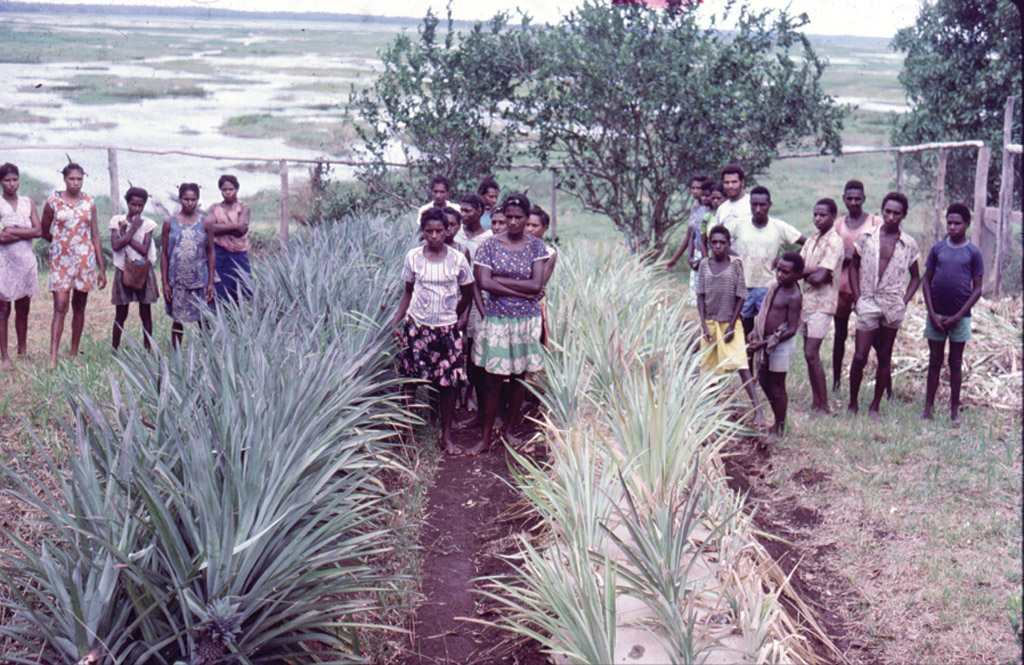3.1 World land use
Humans use biomes across the globe to produce goods that can be used for food, clothing and shelter. Humans also adapt and change biomes across the world to produce goods that can be used for food, clothing, shelter and energy. Two sentences, two different outcomes. The key words are ‘use’ and ‘adapt’ and ‘change’.
How people use biomes
The simplest way to obtain an overview of how people use the world’s biomes is to examine a map of the world’s economic activity. It is interesting to compare the map showing the world’s biomes in Chapter 2 (Source 2.1) with Source 3.1. There are some similarities.
Source 3.1 World economic activity
The tundra area in the Northern Hemisphere is essentially a biome that is used for nomadic herding. The taiga, or boreal forest, either remains as forest or is used for nomadic herding.
One would think that the desert areas would have little or no agriculture, but even here, though some areas have little or no use, much of the Sahara in Africa is used for nomadic herding and parts of Australia’s desert regions are used for extensive livestock rearing.
The savanna biomes are dominated by grasses. One would expect to see extensive livestock rearing in these regions. The major savanna areas of the world have a variety of land uses, from subsistence mixed crops and livestock in India to mainly subsistence and marginal cultivation and commercial mixed crops and livestock in Africa.
DEVELOPING YOUR UNDERSTANDING 3.1
- Commercial mixed crop and livestock activities are carried out over large areas of Europe, North America and Australia. Discuss how these activities may be related to a particular biome.
- List the economic activities that occur in tropical rainforest biomes.
- Describe the relationship between mining and biomes. Use bauxite and gold as your examples.
- Describe how people have made use of the alpine biomes.
- Explain why the important sugar-producing regions of Australia are not shown on Source 3.1.
The initial examination of the world’s economic activity shows that biomes throughout the world are used, and that there is a major division in the way people use them. Some people use biomes for commercial purposes while others use them for subsistence purposes. The people using biomes for commercial purposes are growing crops or raising livestock for sale. They are using biomes for economic benefit. They expect to make a profit and they use the profit they have made to provide the necessities and luxuries of life. The subsistence farmers who raise crops in some areas and herd livestock in others are at the other end of the spectrum. They usually have very little surplus for sale; their lives are a constant battle to provide food for themselves and their families. The luxuries of life – holidays to Hawaii, a night at the opera or even dinner at a fast-food outlet – are far removed from the way of life of these people.
There is another division in the way people use biomes which is not clearly shown in Source 3.1. The key of the map uses the words ‘extensive’ and ‘large-scale’ in relation to some land uses (‘livestock rearing’ and ‘commercial fishing’). The key doesn’t use the opposite terms – ‘intensive’ and ‘small-scale’ – in relation to land uses. ‘Extensive’ and ‘large-scale’ refer to individual agricultural activities that cover a large area.
The obvious activities in Australia are the raising of sheep and cattle and the growing of wheat and cotton. In the United States, it is the growing of corn and cotton. These farms cover large areas. ‘Intensive’ and ‘small-scale’ land uses refer to activities that cover a small area. In Australia, many land uses fall into this category: sugar cane farming, vegetable production and dairying.
A key geographic term – ‘scale’ – has been used here in a way that is different from how it is used in relation to maps. A large-scale map is very different from a small-scale map. Source 3.2 will clarify the differences.

| Term | Referring to land use | Referring to maps |
|---|---|---|
| Large scale | Huge area 1000 km2 | Small ratio or fraction 1:250 000 |
| Small Scale | Small area 80 ha | Large ratio or fraction 1:50 000 |
Interactive 3.1
In terms of the use of biomes for food production, there is one global issue to consider before continuing.
Thomas Robert Malthus, a minister of religion, was born in 1766 and died in 1834. This was long ago, but the ideas he proposed are very relevant to geographers in the modern era. Malthus (Source 3.3) believed that the world’s population growth in the early 1800s would be faster than the growth of world agriculture, and that only disaster could result unless serious action was taken. In Malthus’ words:
-
The power of population is so superior to the power of the earth to produce subsistence for man, that premature death must in some shape or other visit the human race. The vices of mankind are active and able ministers of depopulation. They are the precursors in the great army of destruction, and often finish the dreadful work themselves. But should they fail in this war of extermination, sickly seasons, epidemics, pestilence, and plague advance in terrific array, and sweep off their thousands and tens of thousands. Should success be still incomplete, gigantic inevitable famine stalks in the rear, and with one mighty blow levels the population with the food of the world.
Converting his words into diagrams shows the following (Source 3.4).
-
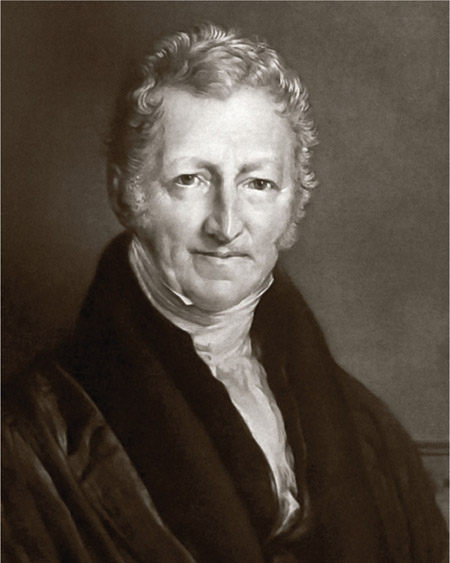
Source 3.3 Thomas Malthus
Malthus believed a disaster or a series of disasters would occur when the crisis point (Source 3.5) was reached.
DEVELOPING YOUR UNDERSTANDING 3.2
Geographers may divide the world into the ‘haves’ and the ‘have nots’ in relation to food accessibility. At any one time, some regions are in surplus and have enough food for their region and some left over. Other regions are in famine and people are dying because there is not enough food. Divide your class into groups so that some groups examine areas of food shortage and others examine areas of food surplus. When researching your topic, select relevant questions from the list below.
- How are regions identified as being affected by famine?
- Where are these regions?
- Have these regions always been affected by famine?
- Why is famine occurring in these regions?
- Where are the areas of surplus?
- Have these regions always had a surplus?
- Why do these regions have a surplus?
- What is stopping the areas of surplus sending their surplus to areas affected by famine?
Source 3.6 shows the United Nations Food and Agricultural Organization’s perception of what the world’s current land area could be used for.
Source 3.6 World potential land use capabilities
What would happen to the world’s biomes if this became reality?
That is the global scene. It may be frightening, but for a geographer, it should suggest enormous possibilities. In terms of maps, the next sections will take a large-scale focus and examine what could be considered a hierarchy of uses of biomes.
This is very similar, as an idea, to the hierarchy of animals in the food chain of the savanna.
Hunters and gatherers
The earliest humans hunted and gathered food in the forests and plains around them. There are parts of the world where this still happens. The photo set in Sources 3.7–3.11 shows a group of people living in the forests of the Fly River in Papua New Guinea.
When missionaries first encountered this group of people they lived simply on the fruits of the forest. The missionaries changed these people’s way of life, settling the group in a village and therefore transforming their nomadic life in the forest. Evidence of some of the changes can be seen in the pictures following.
As hunters and gatherers, the people had had a limited impact on the rainforest biome they lived in. They lived off the forest. An animal was killed from time to time, but not all the animals were killed; nor was their habitat destroyed. A sago palm was felled from time to time but not all the sago palms were felled. In short, these people lived in harmony with their environment.
The people are referred to as the Suki: that is the name of the language they speak. The earliest known record of them is when they attacked the explorer Luigi D’Albert in 1877 while he was exploring the Fly River. They were still head hunters as recently as 1931. Missionaries visited the area during World War II, and returned permanently in 1944. The photos above were provided by a student – Richard Gardner – who was a missionary in this area in the 1960s and 1970s. Gardner was proud of his work with the Suki and proud of the fact that one Suki tribesman had actually continued his education and returned to the village as a university graduate.
Hunter-gatherers were the first people to domesticate dogs.
DEVELOPING YOUR UNDERSTANDING 3.3
Shifting cultivators
If shifting cultivators are left undisturbed, they too have a minimal impact on the rainforest environment in which they are usually found. The cycle of shifting cultivation is shown in Sources 3.12 and 3.13.
The story of these shifting cultivators is simple. An area of rainforest is selected as a plot and most trees in it are felled. Some are left to hold the soil together if the plot is on a steep slope and some may be left for climbing plants to grow on. Some of the felled trees are burned to provide nutrients for the soil and others are used as a barrier, to protect the plot from wild animals. A variety of crops are planted. This is important because it means the people’s diet is varied. It also means that if one crop fails, they will still have food. The first crop is excellent. The plot is only used for around 3 years, because the yields decrease over time. At that point a new plot is established.
Before leaving the old plot, the group will open the barrier around it. Wild animals, usually wild pigs, will enter the plot to forage among the leftovers.
These will be killed, making for a variation in the diet of the people.
The group may move their settlement to the new plot if it is far away. The old plot and old settlement sites are soon reclaimed by the rainforest. Over 16–20 years the humus layer builds up on the floor of the forest and the soil fertility returns. Remember, a rainforest is capable of creating its own fertile soils. When the soil fertility has been restored and a good forest cover has been established, the group can return and use the area again. In this way they shift their plots around, making breaks in the canopy of the forest from time to time, using the fertility of the soil but never completely destroying the biome because they move on once their crops have exhausted the fertility of the soil.
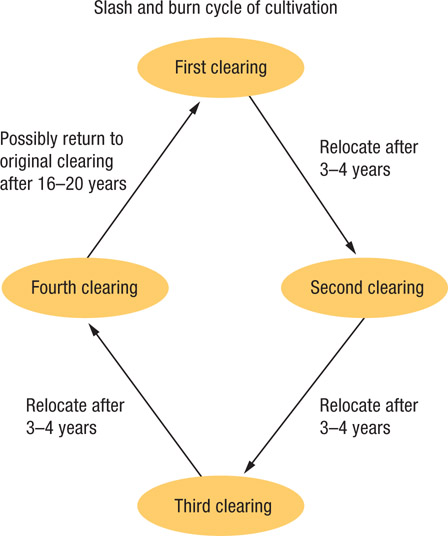
Contact with the outside world has changed the way of life of the shifting cultivators. Missionaries bring medicines, and others may bring axes and chainsaws. The medicines mean that fewer people are dying from the diseases and other threats in the forest. The populations have increased and the axes and chainsaws mean that areas can be cleared more quickly and larger areas can be cleared.
-
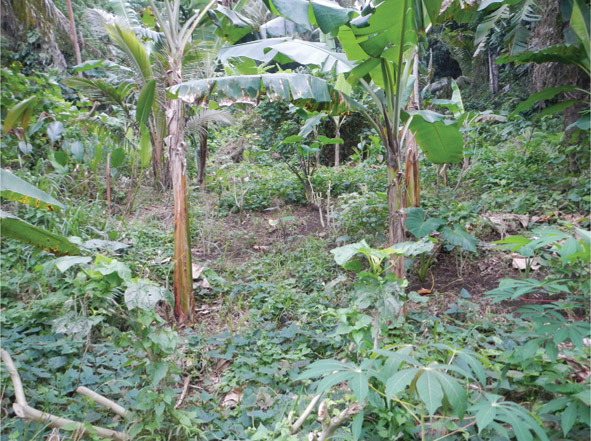
Source 3.14 This plot is on Nguna Island in Vanuatu and shows cassava, bananas and sweet potatoes being grown. -
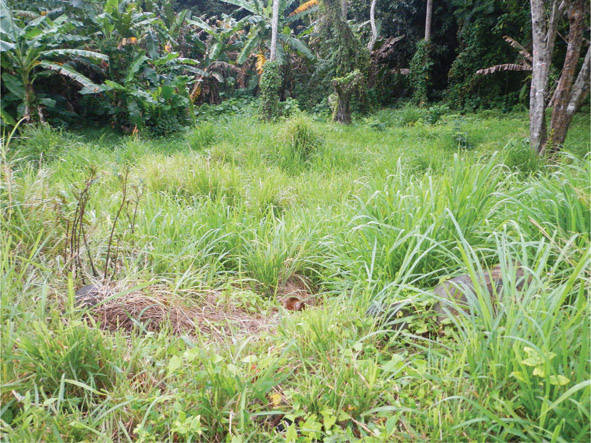
Source 3.15 Blady grass (Imperata cylindrica) often replaces rainforest in areas where shifting cultivators have overused the land. Blady grass can be found in many parts of Australia.
The growth in population means that the shifting cultivator has to return to a plot sooner than the required 16–20 year growth period. The rainforest is therefore not well enough established, so the cycle is shortened. In many areas, particularly the northern Philippines, the abandoned plots were being taken over by grass, which does not provide good soil nutrients. Grass encourages more grass, which competes with the young rainforest species.
Large areas of rainforest have been converted to grassland, which is useless for agriculture. Also, the grass is not palatable to cattle, which might otherwise have been introduced.
Here is a biome which could have been used sustainably for years to come, but which is being turned into useless grassland instead. The rainforest is gone and so is the rich diversity of life that lived in it. In many areas the practice of shifting cultivation has been outlawed, but what happens to the people for whom it is a way of life?
DEVELOPING YOUR UNDERSTANDING 3.4
- Explain why hunter-gatherers have such a small impact on their biome.
- Describe how shifting cultivators managed their impact on the biome.
- List the influences that caused shifting cultivators to increase their impact on the biome.
- Research current methods of farming that have less impact than shifting cultivation on a biome.
